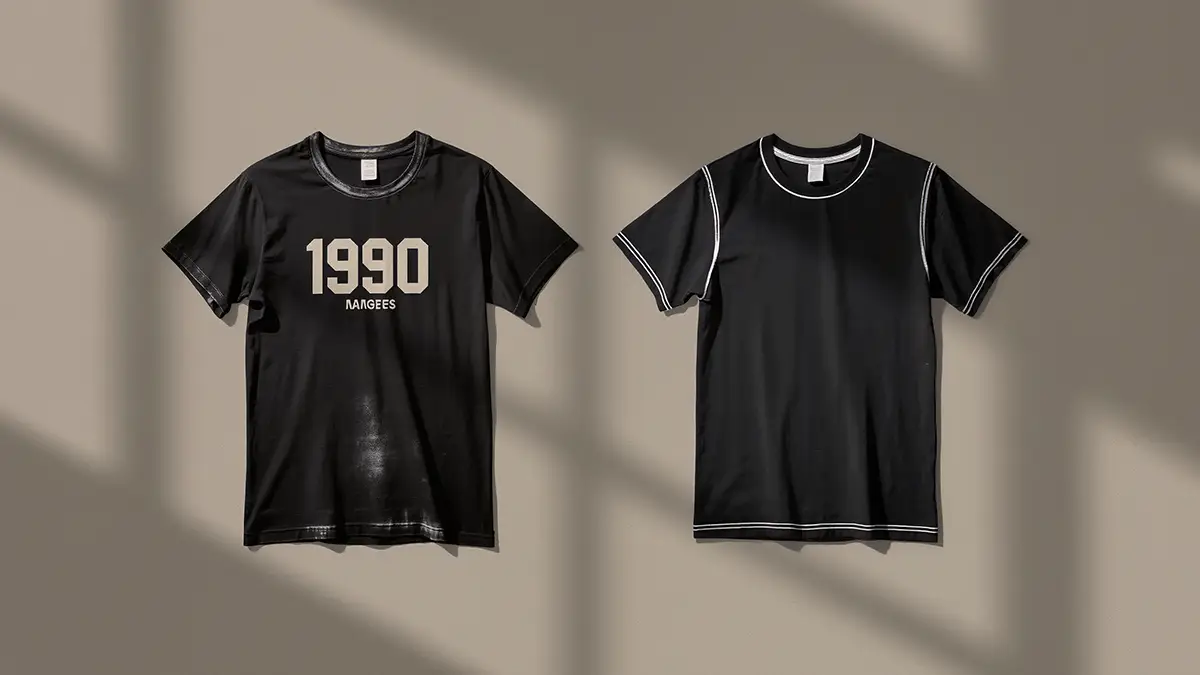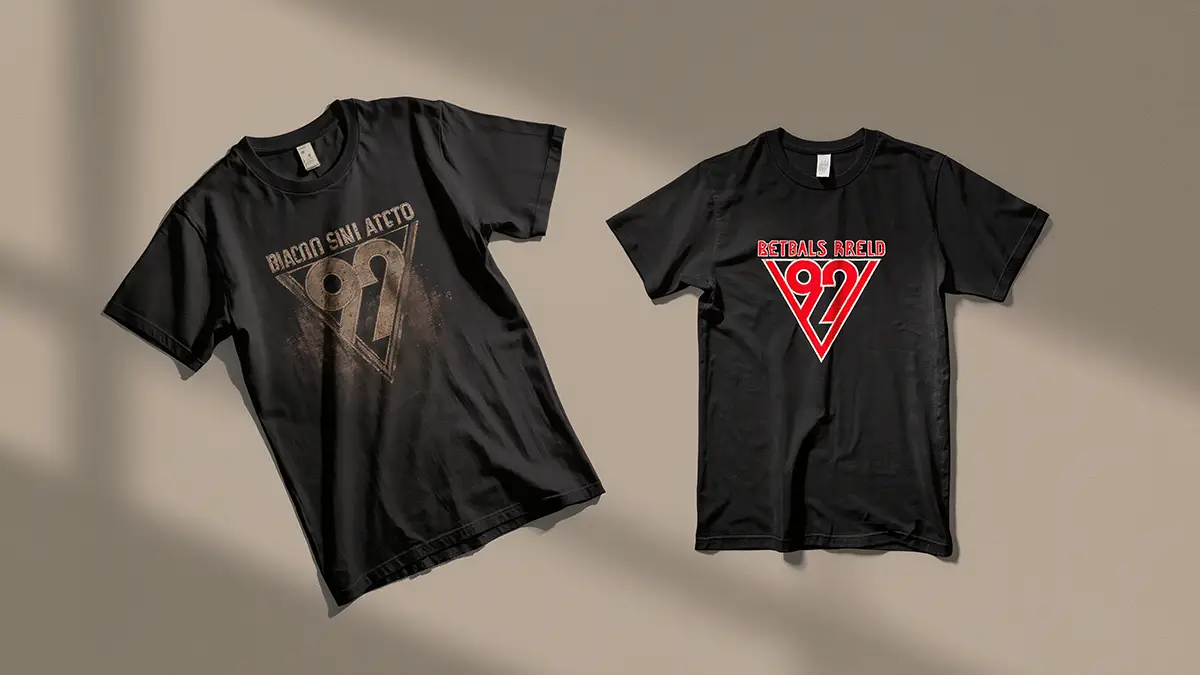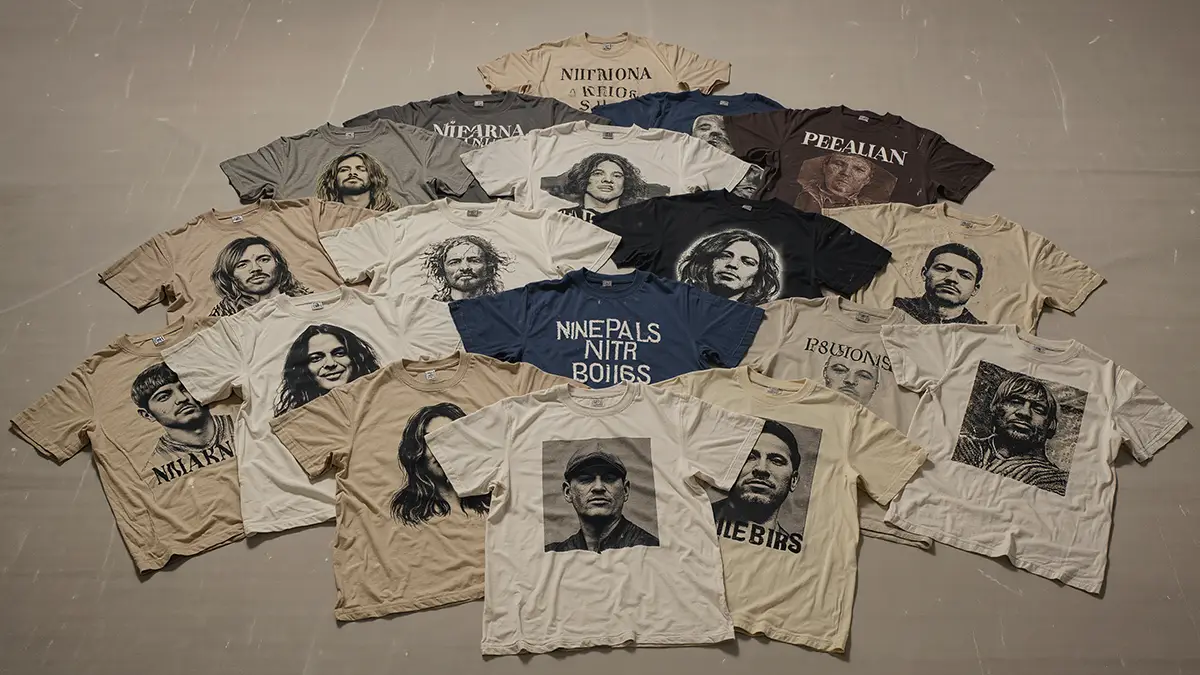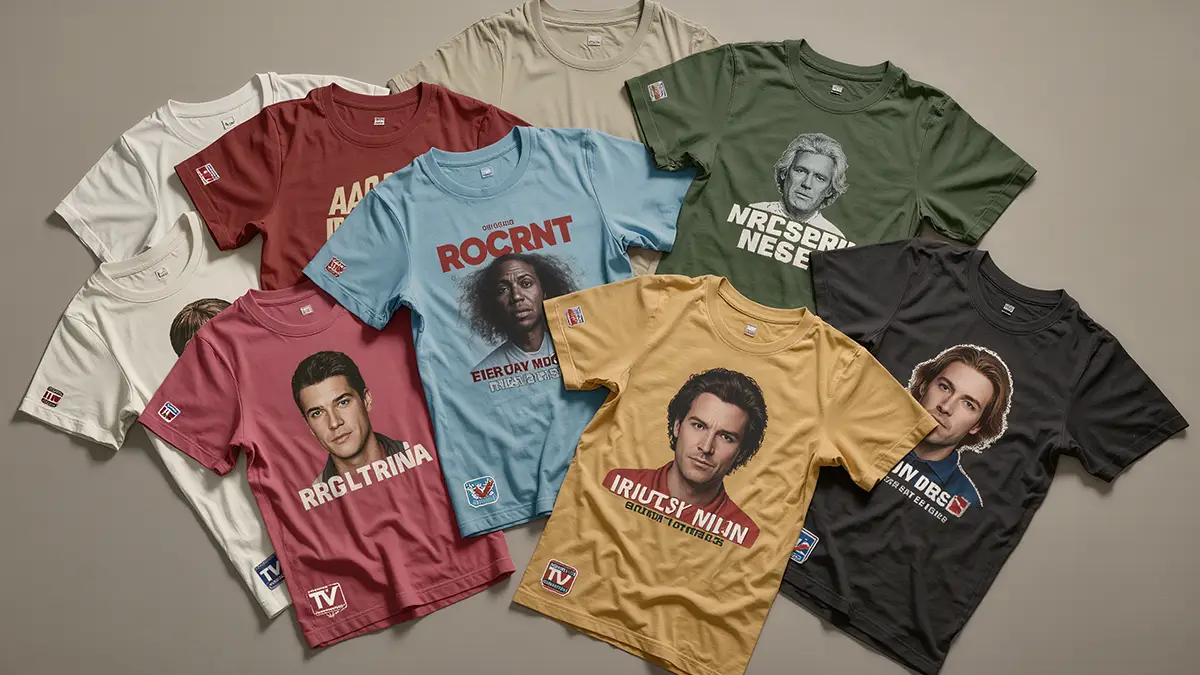A Collector's Guide to 90s Band Tees: The OUTLANDER Archive
Introduction
The 1990s was arguably the last great decade for the band t-shirt as a
physical, cultural artifact. Fueled by the rise of global music television
and distinct, competing subcultures, the tee became more than merchandise;
it was a statement of identity. From the thrift-store aesthetic of grunge
to the bold logos of Britpop, 90s shirts tell a story of a world before
the internet flattened culture.
This guide serves as a lens into that golden age. We will explore the key
genres that defined the decade, the iconic tees they produced, and the
manufacturing details that separate a true vintage piece from a modern
print. At OUTLANDER, this knowledge is our foundation—a commitment to
transparency you can read more about on our [About Us page](./about-us).
The Sound and the Style: Major 90s Genres
Grunge & Alternative Rock: The Seattle Sound and Beyond
The decade began with the raw, distorted feedback of grunge. Bands from the
Pacific Northwest championed an anti-commercial ethos, and their merchandise
often reflected this with cryptic, abstract, or hand-drawn-style graphics.
- Key Bands: Nirvana, Pearl Jam, Soundgarden, Alice in Chains,
Nine Inch Nails.
- Defining Aesthetics: Album art was paramount. Look for shirts
featuring the iconic graphics from seminal albums like **[Nirvana's
_In Utero_](./products/nirvana-in-utero-tee)** or the stark,
minimalist logo from *[Nine Inch Nails' The Downward Spiral*]
(./products/nine-inch-nails-downward-spiral-tee)**. The art was often
dark, introspective, and meant to provoke thought rather than act as a
simple advertisement. The **[Museum of Pop Culture in Seattle (MoPOP)]
(<
collection, provides deep context on this movement's visual identity.
Britpop & UK Rock: The Union Jack Wave
As a reaction to the somberness of grunge, the UK exploded with "Cool
Britannia"—a vibrant scene defined by catchy hooks and swagger. The
t-shirts were often simpler and more direct: bold band logos, song titles,
or portraits of the frontmen.
- Key Bands: Oasis, Blur, Pulp, The Verve.
- Defining Aesthetics: Unlike grunge's cryptic art, Britpop was about
clear identity. Think of the classic Oasis box logo or Blur's simple
typeface. The style was less about intricate artwork and more about
brand recognition, a visual statement of allegiance in the infamous
"Battle of Britpop."
Hip-Hop: The Golden Age of Streetwear
The 90s was a transformative decade for hip-hop, and its fashion became a
dominant force in global streetwear. T-shirts from this era are highly
sought after for their bold graphics and cultural significance.
- Key Artists: Tupac, The Notorious B.I.G., Wu-Tang Clan,
A Tribe Called Quest.
- Defining Aesthetics: Memorial tees, especially for artists like
[Tupac Shakur](./products/tupac-2pacalypse-now-tee), are some of
the most iconic pieces of the era. Record labels like Death Row Records
and Bad Boy Records had their own powerful branding. The art often
involved photo-realistic portraits and bold typography, as detailed in
cultural histories explored by the **[Metropolitan Museum of Art's
exhibits on fashion](<
curatorial-departments/the-costume-institute)**.
The Maker's Mark: The Holy Trinity of 90s Tags
For collectors, the tag is a primary mark of authenticity. Three US-based
companies were dominant licensors and manufacturers for the biggest bands
in the world during the 90s. While these tags are a great sign, knowing
how to authenticate a piece involves more than just one detail. We strongly
recommend reading our complete **[Guide to Spotting a Fake Vintage T-Shirt]
(./how-to-spot-a-fake)** to become a true expert.
- Brockum: Instantly recognizable by its bold, blocky logo, Brockum
was a giant in global music merchandising. Finding a Brockum tag on a
90s band tee, like those for **[Guns N' Roses](./products/
guns-n-roses-skull-collage-tee)**, is one of the strongest indicators
of authenticity.
- Giant by Tee Jays: Giant was responsible for a massive number of
iconic tour tees, especially in the rock and alternative scenes. Their
tags often had a "by Tee Jays" sub-line in the early 90s.
- Winterland: Founded by legendary concert promoter Bill Graham,
Winterland Productions produced merchandise for some of the biggest
tours on the planet. Their tags are a seal of quality and historical
significance. The importance of these licensors is well-documented in
collector communities and music business histories, explored by sources
like the **[American Association for State and Local History (AASLH)]
(<
Conclusion: More Than Merchandise
A 90s band tee is a piece of living history. It tells a story about the
artist, the tour, the fan who wore it, and the decade itself. The subtle
details—the single-stitch seam, the faded graphic, the correct tag—are
what separate a simple shirt from a genuine cultural artifact.
At OUTLANDER, we live for these details. We use this knowledge to
authenticate every piece in our archive, ensuring its story is RARE.
VINTAGE. REAL.
Explore our full, authenticated collection of **[90s Band & Tour Tees]
(./categories/band-tees)**.




